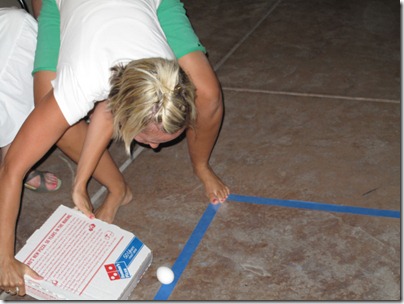
-
МјРЇСІИёСЖШИМі
-
 MINUTE TO WIN IT
MINUTE TO WIN IT 46,614
46,614 -
 Apple Eating Contest Game
Apple Eating Contest Game 34,027
34,027 -
 SINGING BEE
SINGING BEE 23,520
23,520 -
 DEAL OR NO DEAL23,059
DEAL OR NO DEAL23,059 -
 rodeo masbatenio19,303
rodeo masbatenio19,303 -
 Luksong Lubid14,065
Luksong Lubid14,065 -
 Tumbang Preso12,057
Tumbang Preso12,057 -
 EGG AND SPOON RACE11,870
EGG AND SPOON RACE11,870 -
 HULA HOOP11,860
HULA HOOP11,860 -
 BUNONG BRASO ( ARM WRESTLING)11,826
BUNONG BRASO ( ARM WRESTLING)11,826
EGG ROLLING GAME
History
Starting in 1835, Jacob Grimm and other writers proprosed that the pre-Christian Saxons had a spring goddess Eostre, whose feast was held on the Vernal Equinox, around 21 March. Grimm also suggested that her animal was "probably" the spring hare, and that the egg symbolized the rebirth of the land in spring. Some claim that Pope Gregory the Great had ordered his missionaries to use old religious sites and festivals and absorb them into Christian rituals where possible. According to Grimm and his followers, the Christiancelebration of the Resurrection of Christ was ideally suited to be merged with the Pagan feast of Ēostre and many of the traditions were adopted into the Christian festivities.[1] In England, Germany and other countries, children traditionally rolled eggs down hillsides at Easter; this may have become symbolic of the rolling away of the rock from Jesus Christ’s tomb before his resurrection.[2] This tradition, along with others such as the Easter Bunny, were taken to the New World by European settlers.[2][3]
Definition:
Move three eggs into a target circle using a pizza box. If you're trying this at home, at least you'll get a pizza out of it!

The Goal
Using an empty pizza box as a fan, move three eggs across the floor and into a marked target zone.
Equipment Needed
- Three eggs (raw, not hard-boiled)
- One empty 14" pizza box
How to Play
Place the eggs on the floor, far from the designated target area, spaced out several feet apart. Stand behind the egg in the middle with the pizza box in both hands, with the side that opens facing you
Start the timer. Begin fanning one of the eggs towards the target area. When one egg is in the zone, move on to the next one. All three eggs must be stationary and inside the target area by the time the one-minute timer is finished in order to win.

The Rules
- The pizza box may not be opened at any time during the game.
- An egg is considered to be in the target area as long as any part of its shell is touching the marked area.
- You may not touch the eggs with any body part, or with the pizza box.
- If an egg breaks or rolls off the stage, the game is over.
Tips and Tricks
This is one of those games that is tricky to practice at home, since we don't know the exact measurements to set it up. Practice using varied distances between the eggs and the collection zone, and use a small collection zone to ensure accuracy.
- ЁЄ

- ЁЄDr.quack quack game (THE HUMAN
- ЁЄSLIPPER GAME
- ЁЄBati-Cobra
- ЁЄMONOPOLY GAME
- ЁЄcoconut shell race/sangkayaw
- ЁЄJack\'n\'Poy
- ЁЄTEN-TWENTY
- ЁЄtomato dance
- ЁЄSerereng
- ЁЄ\"Araw - Lilim\" (Day and Nigh
- ЁЄMAALIS-ALIS/ kaya, kulob (palm
- ЁЄBottle and Straw Game
- ЁЄHabulan ng Baboy (chase and ca
- ЁЄPING TAC TOE



- ЁЄ

- ЁЄSalapan Festival
- ЁЄEmpanada Festival (Batac City)
- ЁЄPADUL-ONG FESTIVAL
- ЁЄKaumahan Festival in Barili
- ЁЄKAGASANGAN FESTIVAL
- ЁЄLalin Festival in Asturias
- ЁЄTinabuay Festival
- ЁЄGayon Bicol Festival
- ЁЄPINYASAN FESTIVAL in CAMARINES
- ЁЄMAGAYON FESTIVAL
- ЁЄBANAUAN FESTIVAL (BARANGAY.GUA
- ЁЄThe Tuna Festival in Gensan
- ЁЄPINTOS FESTIVAL BOGO CITY, CEB
- ЁЄPanaad sa Negros



- ЁЄ
- ЁЄCEBU WESTOWN LAGOON
- ЁЄGREEN LAGOON, COMPOSTELA
- ЁЄCALLAO CAVE
- ЁЄMOUNT PINATUBO IN PHILIPPINES
- ЁЄBATAN ISLAND in Batanes.
- ЁЄCALAGUAS ISLAND, CAMARINES NOR
- ЁЄAGHO ISLAND
- ЁЄCARAMOAN ISLAND IN CAMARINES S
- ЁЄSAMBAWAN ISLAND
- ЁЄPLACES TO VISIT IN LANAO DEL N
- ЁЄPLACES TO VISIT IN ZAMBOANGA C
- ЁЄPlaces to visit in Rizal Provi
- ЁЄHISTORIC TOWN OF VIGAN CITY, I
- ЁЄCAMBUGAHAY FALLS, SIQUIJOR ISL













 ЧЪРкДхФФ ОпАЃЛѓДу ПРЧТ
ЧЪРкДхФФ ОпАЃЛѓДу ПРЧТ 12ГтПЌМг МвКёРкИИСЗ 1РЇ
12ГтПЌМг МвКёРкИИСЗ 1РЇ
 ГЛАд ИТДТ ОюЧаПј УЃБт
ГЛАд ИТДТ ОюЧаПј УЃБт
 ИЎОѓ ЧаБГ ЙцЙЎБт
ИЎОѓ ЧаБГ ЙцЙЎБт
 СжИЛПЁ ГЛАЁ ОЕ КёПыРК?
СжИЛПЁ ГЛАЁ ОЕ КёПыРК? УжАэАЁМККё РЬКЅЦЎ СёБтБт
УжАэАЁМККё РЬКЅЦЎ СёБтБт
 ЧіСіПЁМЕЕ ЧЪРкДхФФ!
ЧіСіПЁМЕЕ ЧЪРкДхФФ! ЧіСіПЁМ АЁДЩЧб
ЧіСіПЁМ АЁДЩЧб









 ЧЪРк ЦЏБо Ч§ХУ! ФСНУОюСі МКёНК
ЧЪРк ЦЏБо Ч§ХУ! ФСНУОюСі МКёНК


































